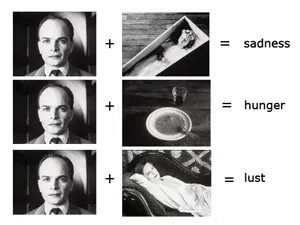finding patterns in the cosmos
a quick thought on synchronicity and our need for meaning.
a man complains about a pain in his throat. his wife observes a flock of birds land on their roof. she panics and fears that her husband will die; C.G. Jung immediately sends the man to a heart specialist. the husband dies.
based on our cultural backgrounds, we all have our own conclusion to make on the cause and effect and interrelatedness of this series of statements.
some will see complete chance and coincidence, and some will see a larger design at play.
but regardless of your own preconceptions for the above event, it is a beautiful combination of symbology and subjective thinking that drives our intuition.
many species on earth, like humans, have pattern-recognizing instincts that help us survive by understanding what an object or event means for their survival, success, and failure.
humans and a few other species have taken it to another level by discovering patterns in any kind of event, leading to predictions and observations that push the boundaries of normal cause and effect.
unexpected content is directly or indirectly connected with an objective external event and coincides with the ordinary psychic state: this is what i call synchronicity (Jung, Synchronicity: An Acausal Connecting Principle).
to better understand the workings of synchronicity, we should look at the most symbolically-filled medium humans have invented so far: the movie.
consider the psychology of editing in movies: if you see a shot of a kid looking at something behind the camera, and cut to a happy dog, you’ll think it’s a happy scene.
if you see the shot of the kid looking and then it cuts to a dead dog, it’s suddenly sad.
the shot of the kid looking can be the exact same, but once we pair it with either a positive or negative symbol, we will assume the emotional state.
this is an example of the kuleshov effect:
movie editing is the act of juxtaposing two different subjects in a specific time, engaging the audience to make internal emotional and intellectual judgments based on the juxtaposition. it’s almost a manufactured synchronicity.
if we were aliens living beyond symbology and causality and looked at the above graphic, all we would see is coincidence. “there’s a man, there’s a dead child. alright why are we seeing this?” but as a pattern-generating, symbolic species, we understand the connection of two images with each other.
but we’ve seen how some people don’t “get” movies when they watch cinematic grammar that might be too subtle, but seems so obvious to others.
this is similar to the woman connecting birds with death; we all have our cultural and psychological backgrounds that allow us to find patterns in what we hear, see, and feel.
but again, regardless of what we feel about hidden connections between events that aid our intuition or premonitions, the universal truth of the human spirit is that it is always in search of meaning.
sometimes our search of meaning will connect our inner emotional state with an external event. if we feel the world is ending due to depression and a plane crashes in our city, we might find a lot of meaning in that juxtaposition.
there is no prescriptive thought in this post, mostly observational.
even if we can’t make conclusions on why these patterns occur, we can at least ask ourselves something very important in relation to synchronicity:
what can we learn about ourselves in the patterns of the cosmos that we take for granted?
what insights can we make about our subconscious and conscious minds by the way we perceive events as premonitions for the future?
in other words, what kinds of inner conditioning can you recognize when you focus on specific events for meaning, and ignore other events due their perceived lack of meaning?
thanks for reading
—dom



